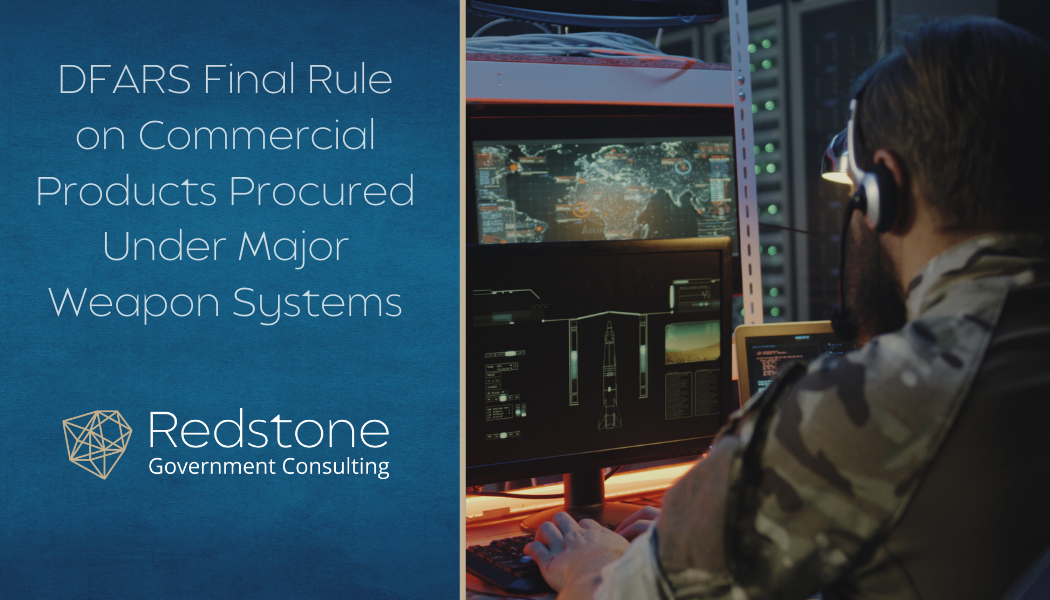Probably now. Depending on the type and dollar amount of your subcontracts, FAR 52.244-2 Subcontracts clause requires a contractor that does not have an approved purchasing system (never been reviewed or is disapproved) to obtain written consent from the Contracting Officer before subcontract award.
Topics: Contracts & Subcontracts Administration, DFARS Business Systems, Contractor Purchasing System Review (CPSR), Government Regulations, Federal Acquisition Regulation (FAR)
In the June 27, 2024 Federal Register, the Cost Accounting Standards Board (CASB) put out a notification that it was looking for input on its efforts to conform Cost Accounting Standards (CAS) to Generally Accepted Accounting Principles (GAAP) related to operating revenue and lease accounting. Back on March 13, 2019, the CASB published a Discussion Paper to collect initial input on the conformance of CAS to GAAP. Then on November 5, 2020, the CASB published a notice of proposed rulemaking specifically addressing operating revenue and lease accounting.
Topics: Compliant Accounting Infrastructure, Contracts & Subcontracts Administration, Government Regulations, Cost Accounting Standards (CAS)
In the June 27, 2024 Federal Register, the Cost Accounting Standards Board (CASB) put out a notification that it was looking for input on its efforts to conform Cost Accounting Standards (CAS) to Generally Accepted Accounting Principles (GAAP) for Compensated Personal Absence (CAS 408) and Depreciation of Tangible Capital Assets (CAS 409). Back in March of 2019, the CASB published a Discussion Paper to collect initial input on the need for CAS 408 and 409 based on the changes that had been made to GAAP since the 1970’s.
Topics: Compliant Accounting Infrastructure, Government Regulations, Cost Accounting Standards (CAS), Federal Acquisition Regulation (FAR)
DoD issued a final rule DFARS Case 2023-D010 on May 30, 2024, amending The Defense Federal Acquisition Regulation Supplement (DFARS) implementing Section 803 of the National Defense Authorization Act on data required in support of commerciality determinations and price reasonableness under procurements for major weapon systems. The purpose is to provide additional guidance related to the data required to support a request for a commercial determination and the price reasonableness process.
Topics: Proposal Cost Volume Development & Pricing, Contracts & Subcontracts Administration, Government Regulations, Federal Acquisition Regulation (FAR), Commercial Item Determination
In the June 27, 2024 Federal Register, the Department of Defense (DoD) is proposing to change the Defense Federal Acquisition Regulation Supplement (DFARS) to implement a section of the National Defense Authorization Act for Fiscal Year 2021 requiring that the generally accepted auditing standards (GAAS) definition of a “material weakness” be used in place of the current definition of a “significant deficiency” when evaluating a contractor’s business system.
Topics: Small Business Compliance, DFARS Business Systems, DCAA Audit Support, Government Regulations, Federal Acquisition Regulation (FAR), Material Management & Accounting System (MMAS), Estimating System Compliance
The Office of Management and Budget (OMB) issued a final rule revising 2 Code of Federal Regulations (CFR), now called OMB Guidance for Federal Financial Assistance, to streamline and clarify the rules for federal financial assistance (e.g., grants and cooperative agreements). Agencies must implement the Final Rule by October 1, 2024. These rules will apply to new grants and can be applied to existing grants by a bi-lateral modification. Although OMB indicates that agencies may apply the new rules beginning June 21, 2024, we believe most federal agencies will wait so that both the agencies and the recipients have time to read and digest some of these updates.
Topics: Compliant Accounting Infrastructure, Contracts & Subcontracts Administration, Government Regulations, Grants & Cooperative Agreements (2 CFR 200)
So, you have been notified by the Defense Contract Audit Agency (DCAA) that they plan on performing an incurred cost audit. What comes next? How is this audit being performed? You are probably not going to get this background from your DCAA auditor. This article will go over the process that will be applied to take a little of the “mystery” away.
Topics: Compliant Accounting Infrastructure, Incurred Cost Proposal Submission (ICP/ICE), Government Regulations
Cost Accounting Standard (CAS) 409 provides the criteria for assigning costs (i.e., depreciation) of tangible capital assets to cost accounting periods and allocating those costs to contracts in an objective and consistent manner.
Topics: Compliant Accounting Infrastructure, Proposal Cost Volume Development & Pricing, DFARS Business Systems, Government Regulations, Cost Accounting Standards (CAS), Federal Acquisition Regulation (FAR)
In the June 18, 2024 Federal Register, the Cost Accounting Standards Board (CASB) put out a notification that it was looking for input on how Cost Accounting Standards (CAS) applicability should be handled when it comes to Indefinite Delivery Vehicles (IDVs) (i.e., Indefinite Delivery Indefinite Quantity (IDIQ) contracts). This goes back to an old CASB case from three years ago – CASB Case 2021-01, Application of Cost Accounting Standards (CAS) to Indefinite Delivery Vehicles (IDVs).
Topics: Compliant Accounting Infrastructure, Contracts & Subcontracts Administration, Government Regulations, Cost Accounting Standards (CAS)
There is no such thing as a risk-free interaction with the Government when it comes to submitting data.
Topics: Proposal Cost Volume Development & Pricing, Contractor Purchasing System Review (CPSR), Government Regulations, Federal Acquisition Regulation (FAR), Estimating System Compliance










